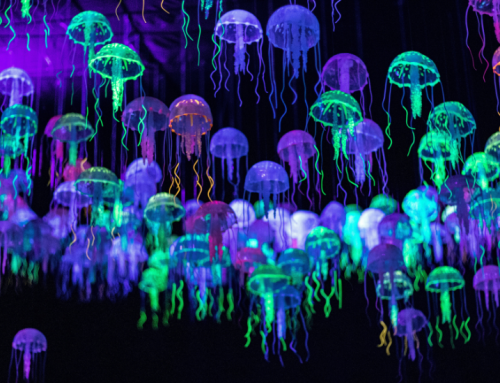Controlling and Curtailing Impulse Buying
There is a special kind of thrill in strolling through a shopping mall, idly scanning the shelves, only to suddenly stumble upon something you did not know you needed – until that very moment. Maybe it is a pair of shoes screaming your name from behind the glass. Maybe it is a fancy espresso machine promising café-quality lattes at home. Or perhaps it is just a quirky gadget you saw online at two in the wee hours of the morning and you just clicked “Buy Now” before your brain had time to object. Whatever form it takes, impulse buying is a deeply human experience. Equal parts excitement and regret, it is the act of purchasing something spontaneously, with little thought or planning.
Let us now dive into the curious world of impulse buying, exploring its nature – what and why it is (hint: your brain is a bit of a drama queen!), and how you can rein in the urge without sucking all the joy out of shopping.

What Is Impulse Buying?
Impulse buying is the act of making unplanned purchases. It is typically driven by emotions rather than logical reasoning. These are the things you did not intend to buy when you walked into the store or logged onto a website, but there they were, practically leaping into your shopping cart. From checkout counter candies to sudden splurges on high-end electronics, impulse purchases vary in size and consequence.
Interestingly, retailers have made a fine art out of encouraging this behaviour. Supermarkets place tempting items near the cashiers. Online stores use flash sales and countdown timers to spark FOMO (fear of missing out). Social media advertisements practically read your mind and showcase items you had been browsing. And then there is that handy “one-click purchase” feature that might as well be called “wallet’s doom.” But what is it that makes us fall for these traps over and over again?
There are four defined types of impulse purchases. These categories may help you to better understand the process that happens before the act of purchasing.
- Pure impulse buying: This is the easiest kind of impulse buying to recognise and is the base level in which someone makes an impulse decision based on a certain emotion. An example would be grabbing a candy bar near the cashiers of a store because you suddenly crave something sweet after seeing it.
- Reminder impulse buying: You see an item or remember a certain thing that reminds you that you need a separate item. For example, you go to the grocery store to buy some bread, but when you walk past the toothbrushes, you remember that you are out of toothpaste so you buy some.
- Suggestion impulse buying: This one stems from a more rational place where our mind creates the need for an item. This is usually when you are convinced to buy something due to a marketing message. For instance, you are out to lunch and instead of ordering your regular soda, you decide to try sparkling water because you heard it has fewer calories.
- Planned impulse buying: Planned impulse buying sounds like an oxymoron, but it heavily revolves around discounts, promotions and items you had already thought about purchasing. For example, you are walking through your local electronics store and see a mobile phone you had thought about buying a few weeks ago. You see that it is now 50% off and decide to immediately purchase it.
Even with all these in mind, they are still called impulse purchases for a reason. And despite having them laid out and defined, it can still be difficult to fully comprehend your behaviour in the moment. Why do we want to buy something on the spot that we had not thought about earlier?
“Impulse buying is the act of making unplanned purchases. It is typically driven by emotions rather than logical reasoning. These are the things you did not intend to buy when you walked into the store or logged onto a website, but there they were, practically leaping into your shopping cart.”

Why We Impulse Buy
Let us take a peek inside our brain and take a little stroll through the human psyche, shall we? Impulse buying is fuelled by a powerful mix of psychological and emotional triggers. Our brains are hardwired for pleasure and novelty. When we see something desirable, our limbic system – a group of interconnected brain structures that help regulate our emotions and behaviour – lights up like a pinball machine. This system is attracted to immediate gratification and responds preferentially to rewards available right away. It is the system that goads us when we see a discounted product or get drawn into attractive marketing. Dopamine is released, creating a sense of anticipation and reward. This is the “I deserve this” moment.
Unfortunately, the rational part of the brain, the prefrontal cortex, which governs logic and selfcontrol, tends to lag behind in these moments. It is like watching a toddler (your emotions) run loose in a candy store while the parent (your logic) slowly waddles behind trying to catch up. Marketers are well aware of this dynamic. They craft messages and environments to exploit it. The language of advertising is steeped in urgency and scarcity: “Only 2 left in stock!”, “Today only!”, “Limited edition!”, etc. These triggers put our brain on high alert, convincing us that hesitation equals loss.
Another significant reason people impulse buy is due to deals and sales. People love to get a good deal, so when they see that something is 50% off, considering if they actually need the item gets pushed a little further into the background. It is another reason many sites offer free shipping on orders over a certain amount: people love to feel like they are getting the best deal they can, this is even when they need to “add on” items over and above what they had originally intended to buy just to hit that specific “free shipping” amount.

Then there are emotional states. Boredom, stress, sadness and even happiness – any strong emotion can nudge us toward spending. Shopping becomes a coping mechanism, a mood elevator. This is why “retail therapy” is more than just a cheeky phrase – it is an actual behaviour backed by neuroscience. If you are wondering about the scientific basis of retail therapy, yes – studies do suggest that buying stuff can be a coping mechanism for stress and negative emotions…but it should be used in moderation.
Social influence plays a major role too. Seeing someone on TikTok, Instagram or Facebook unboxing the latest gadget or flaunting a new outfit can create a sense of inadequacy Interestingly, retailers have made or envy. Our brains think, “If I buy this too, maybe I’ll feel better. Maybe I’ll belong.” Social pressure from other areas can also greatly affect impulse purchasing habits. This can be something as small as your child pleading with you for his favourite breakfast cereal, or a partner urging you to improve your wardrobe by buying a fancy shirt.
Even our environment conspires against us. Ever noticed how luxurious stores smell faintly of something calming, or how supermarkets play relaxing music? These are subtle cues put there to lower your defences and increase your susceptibility to buy. Scent and music are key sensory elements that can influence customer behaviour and sales. This is science. Both can trigger emotions, enhance the shopping experience, and encourage longer dwell times, potentially leading to increased impulse buys and higher spending.
So, it is not just you. It is your brain, your emotions, your environment – and yes, those sneaky advertisements.
The Morning After
While the dopamine rush is real, it is often short-lived. Impulse purchases can lead to a strange kind of hangover – a mix of buyer’s remorse, financial strain and clutter. The item that once sparkled with possibility can start to look like a monument to poor judgment.
Financially, habitual impulse buying can snowball. Small, frequent purchases add up. Those “just $10” buys can quietly nibble away at your budget like termites on a wooden fence. In more serious cases, it can lead to debt, strained relationships and even affect one’s mental health, especially if the buying is being used to mask deeper emotional issues. There is also the environmental cost to consider. Many impulse buys, especially fast fashion and plastic-heavy gadgets, contribute to waste and pollution. So the real price may be higher than the tag suggests.
Still, let us not get too gloomy here. The goal is not to become an emotionless shopping monk, never again tasting the joy of a spontaneous splurge. It is about finding balance, knowing your triggers, and choosing when to indulge and when to pause.
Resisting the Urge Without Killing the Fun
Now comes the practical part: how to control the urge to impulse buy without becoming a miser or turning shopping into a source of anxiety.
- Make a List (and Actually Stick to It)
Before going shopping, whether online or in person, create a list of what you need. This sounds painfully simple, but it works. It sets a mental boundary and gives your prefrontal cortex something to hold onto when temptation strikes.
- Sleep on It
If you see something you desperately want, wait 24 hours before purchasing. Chances are, the urgency will fade, and your rational mind will catch up. If you still want it after a day (or a week), then it might be worth considering.
- Set a “Fun Budget”
Instead of swearing off all unnecessary spending, allocate a portion of your monthly budget to guilt-free indulgence. Knowing you have $50 or $100 set aside for treats makes spending intentional rather than impulsive.
- Unsubscribe and Unfollow
Marketing emails, discount pop-ups and influencer posts – these are all triggers. Unsubscribing or muting sources that tempt you can help to reduce those spontaneous urges. Out of sight, out of cart.
- Shop with a Buddy (Who Is Not a “Bad” Influence)
Having a friend with you, especially one who is not a chronic impulse buyer, can provide some external accountability. Think of them as your financial designated driver.
- Understand Your Emotional Triggers
Are you shopping because you are bored, sad or stressed? Identify the feeling behind the urge. Sometimes, just recognising it is enough to shift your behaviour. Instead of browsing shopping apps, call a friend, take a walk or pet your dog/cat. Dopamine can come from healthier sources, too.
- Track Your Purchases
Keeping a record of your impulse buys, along with how you felt before and after, can be enlightening. Patterns will emerge. Maybe you will realise you always impulse shop after a stressful day at work, or that certain stores are your personal danger zones.
- Ditch the Credit Cards
Do not let the temptation for rewards lure you into using credit cards (that includes store cards too). They make it way too easy to turn today’s purchase into tomorrow’s problem, because you do not see the cash leave your wallet or your checking account balance go down. It is too simple when you do not technically have to pay for it there and then.
- Stop the Comparisons
If you always compare what you have (or do not have) to others, you will never be satisfied. And no amount of compulsive shopping or impulse buying will help. Instead of looking at what someone else has and think, “Oh, I need that too,” work on being grateful for what you do have.
When Impulse is Not All Bad
Let us be honest: not all impulse buying is harmful. Sometimes, that unexpected purchase does turn out to be a new personal favourite item, such as a book that inspires, a shirt that becomes your go-to, or a little trinket that reminds you of a good day. There is joy in spontaneity, and some of the most memorable purchases are the ones that were not planned. Life does not need to be entirely rational all the time. The trick is to make sure these moments are occasional treats, not a daily coping strategy.
In fact, some researchers suggest that moderate, mindful indulgence can be good for your mental health. It offers a sense of autonomy and control – ironically, the very thing unchecked impulse buying can take away. When you choose to indulge rather than succumb, you are reclaiming the reins.

Hurting the Brand
On the surface, brands might seem to benefit from impulse buying, especially online platforms, as it leads to immediate sales. However, there are detrimental long-term implications to be considered for merchants.
Impulse buyers are more likely to return products, which erodes profitability for brands. Processing returns can be costly, not just in terms of logistics, but also because it adds strain to customer service departments and lowers the overall efficiency of the supply chain. For many brands, returns are a hidden cost that significantly cuts into profits.
Customer satisfaction may also take a hit. When consumers feel duped by impulse purchases, they are less likely to become repeat customers. Instead of fostering brand loyalty, impulse-driven shopping often leaves a negative impression, especially if the product fails to meet expectations. Over time, this can damage a brand’s reputation, leading to higher customer churn rates.
The Tug of War Between Want and Need
Impulse buying is a fascinating mix of psychology, culture and personal habit. It thrives on emotion, immediacy, and the delicious moment of “Yes, I’ll take it.” But like all pleasures, it is best enjoyed in moderation. By understanding why we are drawn to shiny things and flash sales, we gain the power to pause, reflect and make choices that serve us better. You do not have to live a minimalist lifestyle nor fear every checkout line. Just be curious about your impulses. Question them gently. Then decide whether to follow them or let them go. After all, the most satisfying purchase is the one you choose deliberately, and not the one that chooses you. PRIME
“Interestingly, retailers have made a fine art out of encouraging this behaviour. Supermarkets place tempting items near the cashiers. Online stores use flash sales and countdown timers to spark FOMO (fear of missing out). Social media advertisements practically read your mind and showcase items you had been browsing. And then there is that handy “one-click purchase” feature that might as well be called “wallet’s doom.””












Leave A Comment